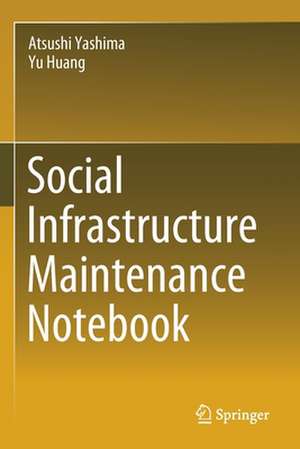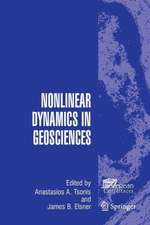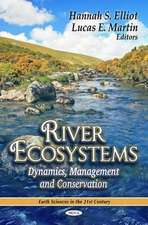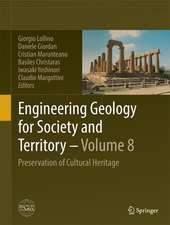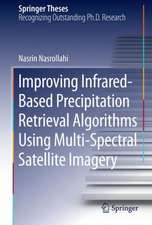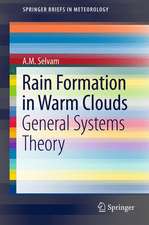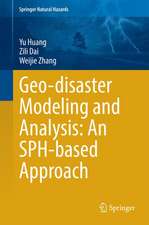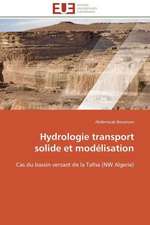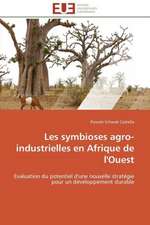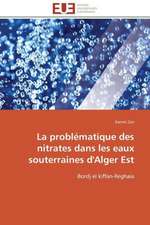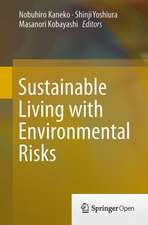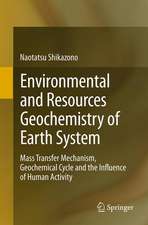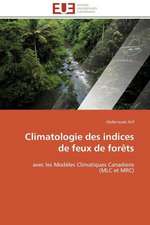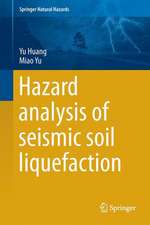Social Infrastructure Maintenance Notebook
Autor Atsushi Yashima, Yu Huangen Limba Engleză Paperback – 24 oct 2021
| Toate formatele și edițiile | Preț | Express |
|---|---|---|
| Paperback (1) | 380.07 lei 6-8 săpt. | |
| Springer Nature Singapore – 24 oct 2021 | 380.07 lei 6-8 săpt. | |
| Hardback (1) | 387.38 lei 6-8 săpt. | |
| Springer Nature Singapore – 23 oct 2020 | 387.38 lei 6-8 săpt. |
Preț: 380.07 lei
Nou
Puncte Express: 570
Preț estimativ în valută:
72.73€ • 79.32$ • 61.32£
72.73€ • 79.32$ • 61.32£
Carte tipărită la comandă
Livrare economică 24 aprilie-08 mai
Preluare comenzi: 021 569.72.76
Specificații
ISBN-13: 9789811588303
ISBN-10: 9811588309
Pagini: 141
Ilustrații: XIII, 141 p. 151 illus.
Dimensiuni: 155 x 235 mm
Greutate: 0.23 kg
Ediția:1st ed. 2021
Editura: Springer Nature Singapore
Colecția Springer
Locul publicării:Singapore, Singapore
ISBN-10: 9811588309
Pagini: 141
Ilustrații: XIII, 141 p. 151 illus.
Dimensiuni: 155 x 235 mm
Greutate: 0.23 kg
Ediția:1st ed. 2021
Editura: Springer Nature Singapore
Colecția Springer
Locul publicării:Singapore, Singapore
Cuprins
Natural Slope.- Embankment.- Cut.- Falling Rocks.- Sabo Facility.- River Levee.- Retaining Wall.- Snow Shed/Rock Shed.- Tunnel.- Pavement.- Slab.- Steel Bridge.- Concrete Bridge.- Box Culvert.- Waterworks and Sewage.
Notă biografică
Dr. Atsushi Yashima is a Professor of the Department of Civil Engineering at Gifu University, Japan. He completed his B.E., M.E., and Ph.D. from Kyoto University. He has about 40 years’ experience in research, teaching, and academic administration, with several years spent holding key leadership positions such as Director of Regional Research Center, Director of Center for Infrastructure Asset Management Technology and Research, and Vice President of Gifu University. His research efforts have focused on Geotechnical and Earthquake Engineering, Disaster Mitigation, and Infrastructure Asset Management. He has supervised 17 Ph.D. theses and over 60 M.E. dissertations. He has 50 publications in international refereed journals, 50 publications in national refereed journals, and 100 publications in various national/international conferences/symposia. He has been an active member of various professional societies and is Fellow of Japan Society of Civil Engineers and member of The Engineering Academy of Japan.
Dr. Yu Huang is a Professor of the College of Civil Engineering at Tongji University, China. He completed his B.E. and Ph.D. from Tongji University in 1995 and 1999. From 2003 to 2005, he worked as a Postdoctoral Fellow at Gifu University under Prof. Yashima’s guidance in Japan. Professor Huang’s primary areas of research include earthquake engineering geology, geological disasters, and geomechanics. He is a Distinguished Professor of the Ministry of Education of China and a winner of the National Science Fund for Distinguished Young Scholars of China. He now serves on the editorial board of international journals, such as Engineering Geology, Bulletin of Engineering Geology and the Environment, and Geoenvironmental Disasters.
Dr. Yu Huang is a Professor of the College of Civil Engineering at Tongji University, China. He completed his B.E. and Ph.D. from Tongji University in 1995 and 1999. From 2003 to 2005, he worked as a Postdoctoral Fellow at Gifu University under Prof. Yashima’s guidance in Japan. Professor Huang’s primary areas of research include earthquake engineering geology, geological disasters, and geomechanics. He is a Distinguished Professor of the Ministry of Education of China and a winner of the National Science Fund for Distinguished Young Scholars of China. He now serves on the editorial board of international journals, such as Engineering Geology, Bulletin of Engineering Geology and the Environment, and Geoenvironmental Disasters.
Textul de pe ultima copertă
This book explains in an easy-to-understand manner the “check” points to keep in mind when inspecting various social infrastructure structures. It is put together in a way that not only engineers who are on the front line of maintenance and management but also engineers who are not normally involved in maintenance and management of social infrastructures as well as general public can understand the importance of social infrastructure inspection work.
Caracteristici
Includes ten important rules for social infrastructure inspection Discusses each rule accompanied by an illustration and a brief comment Presents easy-to-understand maintenance and repair/high functionality technologies
